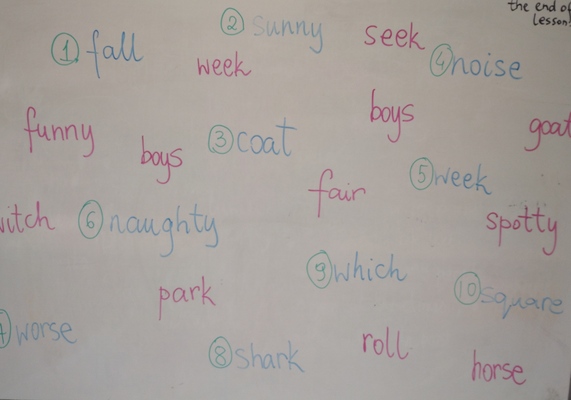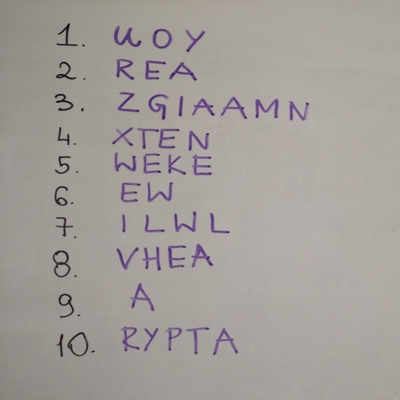
They are growing up. My students are no longer the little babies they were when we said our first ‘Hello!’. Six years is a long time, after all. And because they are changing, the lesson is changing, too. I like to think that, in a way, we are growing together.
An example? For five years and five months my students would wait for me outside of the classroom, in a neat line and we would check the homework and have a little chat, 1-1, with them slowly entering the classroom (more about it here). Well, not anymore. Two months ago we stopped. For good.
Because it turned out that, all of a sudden, the kids like to be in the classroom before the lesson. The choose their seats, take out their books, draw on the board or show each what they do in Maths classes at school. They also like to hide to surprise me (if I happen to leave to get some water or flashcards), walk around to inspect what I prepared for the day or just sit down and read they books.
And because over those six years we have managed to establish what’s OK and what’s not OK in terms of behaviour and because they have grown up and become more mature, I just let them do it and take over the classroom during the break. Plus, let’s be honest, they seem to be enjoying it a lot and I just don’t have the heart to forbid them and to continue to impose lining up.
Instead, I had an idea: how about a before-the-lesson activity for the early comers? It turned to be a very good idea indeed!
Ingredients
- A whiteboard and a set of markers.
- An activity that can be prepared on the board before the lesson for the students to work on potentially unsupervised (although in real life it differs, depending on whether I can be in the classroom during the break or not)
- A set of easy instructions written on the board and an example
- A longer break before the lesson – not obligatory but highly recommended
- It might be necessary for the teacher to hint that there is something on the board that needs dealing with, at least when this part of the routine is introduced. It is quite likely that the kids would just not approach the board if there are any notes on it.
- Ghost letters, focus: pronunciation. Students underline the silent letters in the words written on the board

- Letter snake, focus: reading / writing. Students divide the chain (or a snake of letters) into words. Each snake can be made as challenging as necessary ie only the words themselves, the words with letters-distractors, the words in a sentence.

- Letter stories, focus: reading/ writing. Students divide the very long chain (or a snake of letters) into words and sentences. I used a different colour for each line of the story and neat breaks between the lines, too, not to overwhelm the kids. Forgot to take a photo:-(
- To rhyme or not to rhyme, focus: phonemic awareness. Students put the rhyming words into pairs. Again, colour-coding is supposed to be make is a bit more achievable and visually appealing.

- Messed-up, focus: vocabulary revision. Students put the halves of words together.

- Angrams (and Secret Messages): These are just silly anagrams which are a nice task, more necessary for the Starters students but fun for everyone. It can be a set of random words, connected by the topic (or not) or sentences, especially if there is an especially important message that the teacher needs to pass on to the students. The message below appeared on the board before the second lesson with the mock Movers test, in an attempt to praise the kids and to motivate them. It worked!


Why we like it
- Those who come early can wait for the lesson doing something in English.
- They provide additional practice and revision in different areas and skills: reading, writing, vocabulary, pronunciation
- Different kids come early on different days so they get to work in different pairs and teams which seems to strengthen the sense of community in the group
- It seems to have become ‘fashionable’ to arrive early for class (not that it has even been a problem) but it is obvious that they have already developed the habit of walking in and checking what’s on the board
- The teacher is applying all her creative powers to come up with more and more pre-lesson activities
Happy teaching!